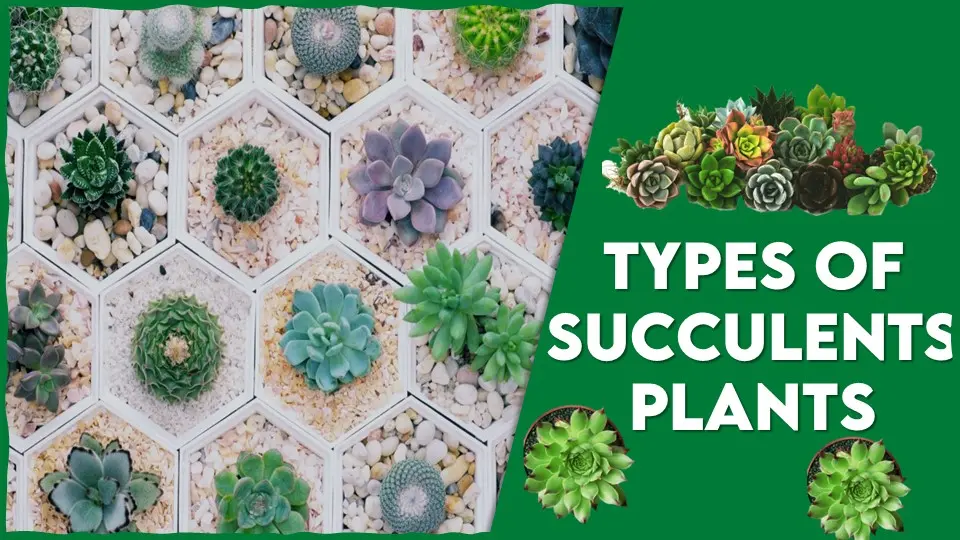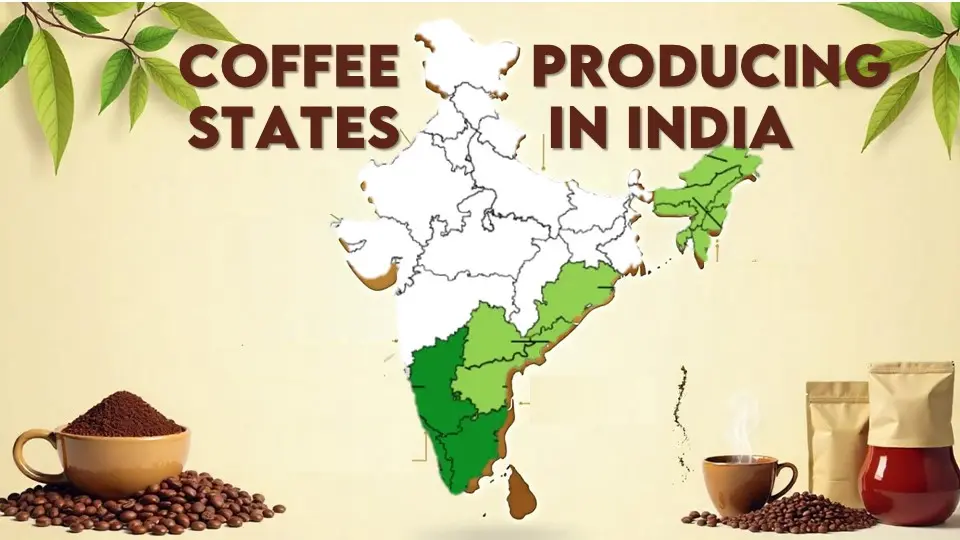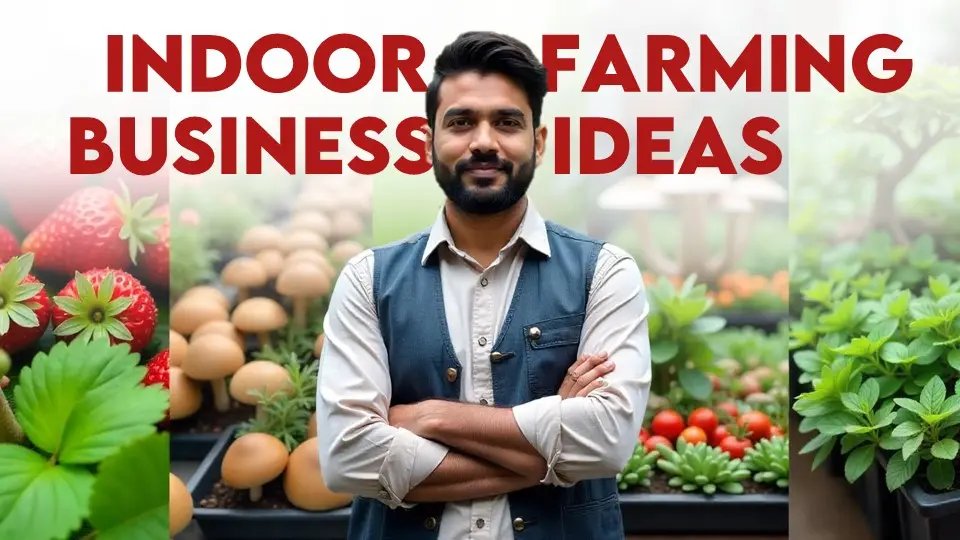A garden is the epitome of beauty in a home. We have always strived to enhance its beauty by planting new ornamentals, bringing in new features, or arranging the plants to create symmetry or shapes. We strive to buy expensive plants or the newest ones available on the market so that we can increase the aesthetic appeal of our gardens.
Well, succulents are the perfect plants that you can acquire for this purpose. These are a bit ‘unconventional’ plants as they grow mostly in arid conditions. But it’s those adaptations that they have acquired that give them that extra aesthetic appeal in your garden. Today we will be looking at different types of succulents plants.
What are Succulent Plants?
The word succulent originates from the Latin word sucus meaning “sap” or “juice” which refers to the juicy sap found inside thickened stems or leaves. Succulent plants have thick, fleshy, and swollen plant parts that satisfy the purpose of moisture storage in arid climates. To retain moisture, they possess various desert adaptations like thorns, modified stems, underground bulbs, etc.. The plant parts of succulent plants contain 85-90% moisture.
The contemporary world has been able to construe the aesthetic appeal that these marvelous plants have, and thus the thought of adding them to our gardens burgeoned in us. With that said we can look into different types of succulents plants.
Types of Succulents Plants
Here are 30 different types of succulents plants to make your garden more attractive
1. Mexican Snowballs
| Scientific name | Echeveria elegans |
| Soil type | Well-drained sandy soil |
| Light requirement | Bright, indirect sunlight |
| Water requirement | Low |
Coming at number 1 in the list of different types of succulents plants is the Mexican Snowballs. Echeveria elegans has tightly packed rosettes that give it a spherical shape and is the reason for its rather interesting common name (Mexican snowball). It’s best to grow the plant in small designer pots which adds an aesthetic touch to the plant.
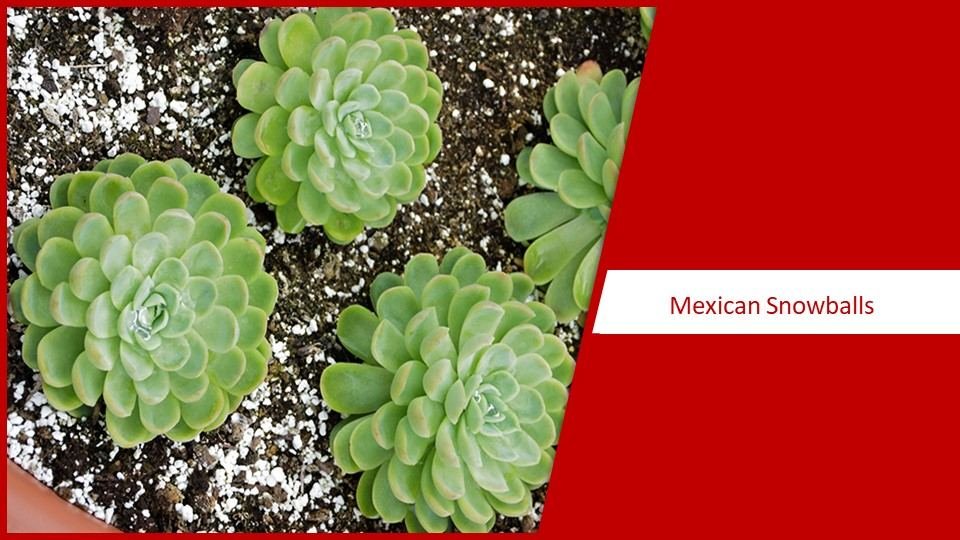
2. String of Pearls
| Scientific name | Senecio rowleyanus |
| Soil type | Well-drained sandy soil |
| Light requirement | Full to partial sun |
| Water requirement | Low |
This unique trailing succulent which is native to Africa, has green beads instead of leaves. Caring for this plant is not easy and the plant can die if the light and water requirements are not met. They are best grown outdoors to provide partial sunlight. Overwatering should be avoided as it requires low water.
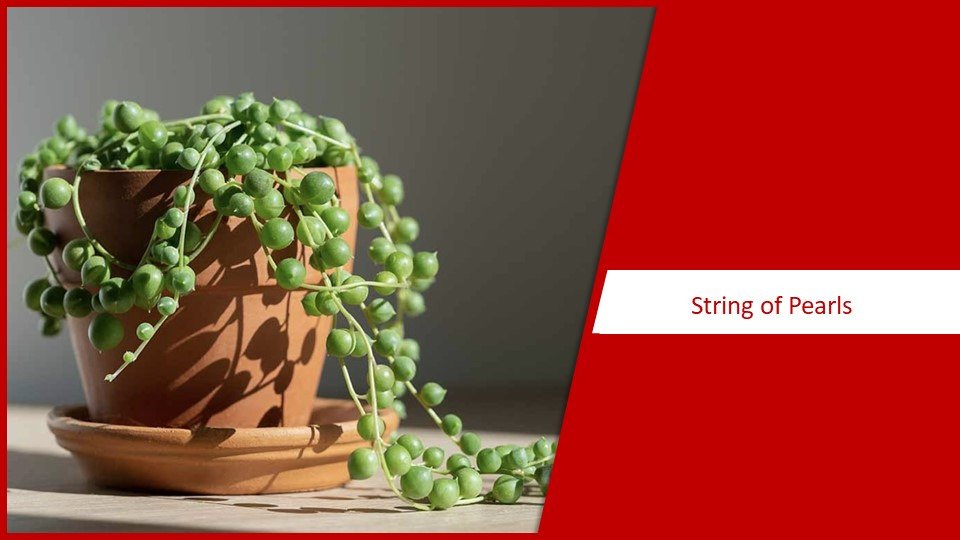
3. Donkey’s Tail
| Scientific name | Sedum morganianum |
| Soil type | Well-drained sandy loam soil |
| Light requirement | Full to partial sun |
| Water requirement | Low |
Another beautiful succulent entering the list is Donkey’s Tail or Burro’s Tail. The highlight of the plant is the long trailing stems with fleshy blue-green leaves which produce a terminal pink to red flower in the summer. The donkey’s tail is an endemic species as it is found only in some parts of Mexico. It is best to grow them in a hanging position, with the trailing stems extending downwards.
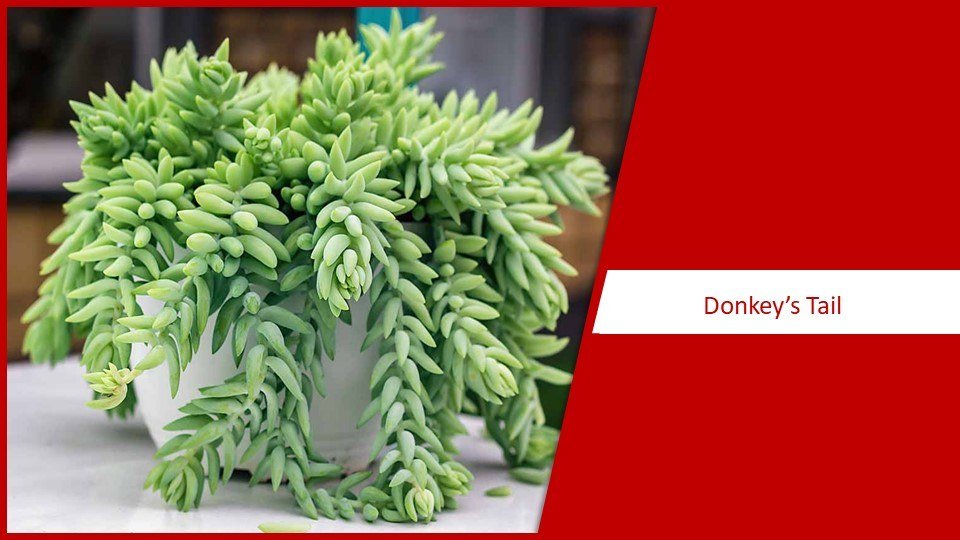
4. Perle von Nurnberg
| Scientific name | Echeveria ‘Perle von Nurnberg’ |
| Soil type | Well-drained sandy, or loamy soil |
| Light requirement | Bright full sunlight |
| Water requirement | Low to moderate |
They have small, soft, triangular leaves that are rosette shaped and the arrangement makes the whole plant look like one giant fully bloomed flower. Although the leaves are grey, they turn pink and purple under the full sun. This succulents produces pink flowers with yellowish tints on the inside during the summer.
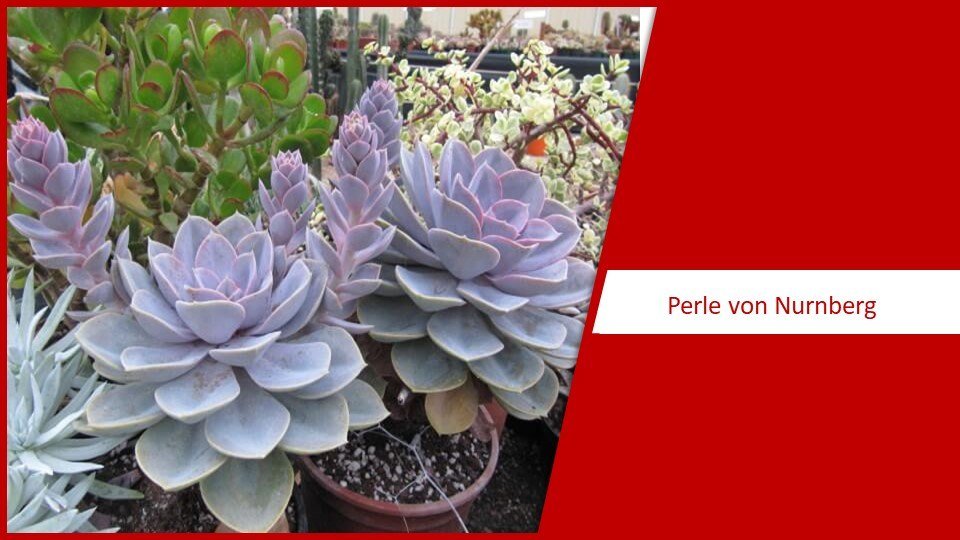
5. Candelabra Cactus
| Scientific name | Euphorbia ingens |
| Soil type | Well-drained sandy soil |
| Light requirement | Direct sunlight |
| Water requirement | Low |
Although the plant resembles a cactus, Candelabra cactus is a flowering plant belonging to the Euphorbiaceae family (spurges). The flowers are produced during the spring through early summer and they open during the day and close at night. Globular, red, and delicious fruits are produced post-flowering.
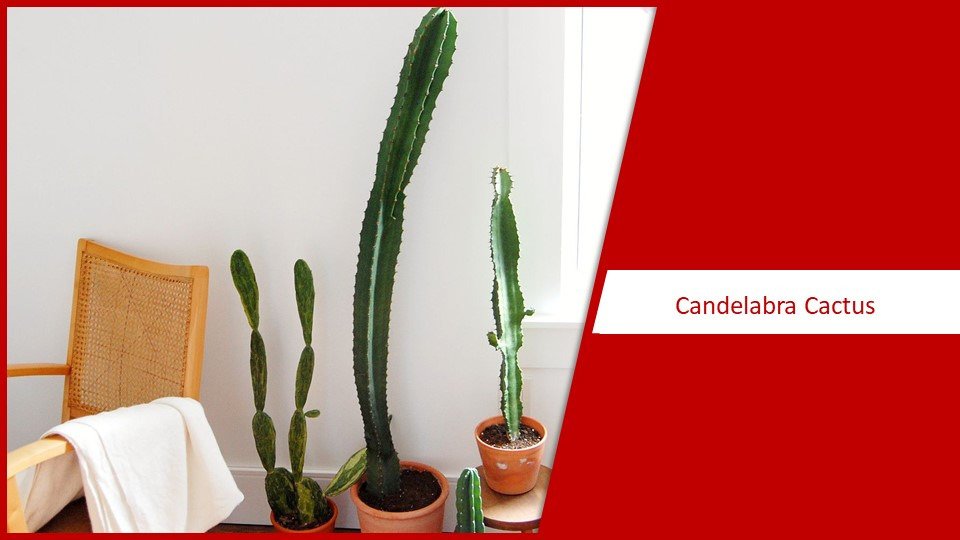
6. Silver Dollar Plant
| Scientific name | Lunaria annua |
| Soil type | Moist soil |
| Light requirement | Full to partial sunlight |
| Water requirement | Low |
These biennial plants are best known for their silver-shaded, pearlescent structures that make them a stunning visual treat. These structures are called siliques as they do not qualify as true seedpods. These translucent, and disc-shaped seedpods are called moonpennies. The Silver Dollar plant produces terminal white or violet flowers in the spring.
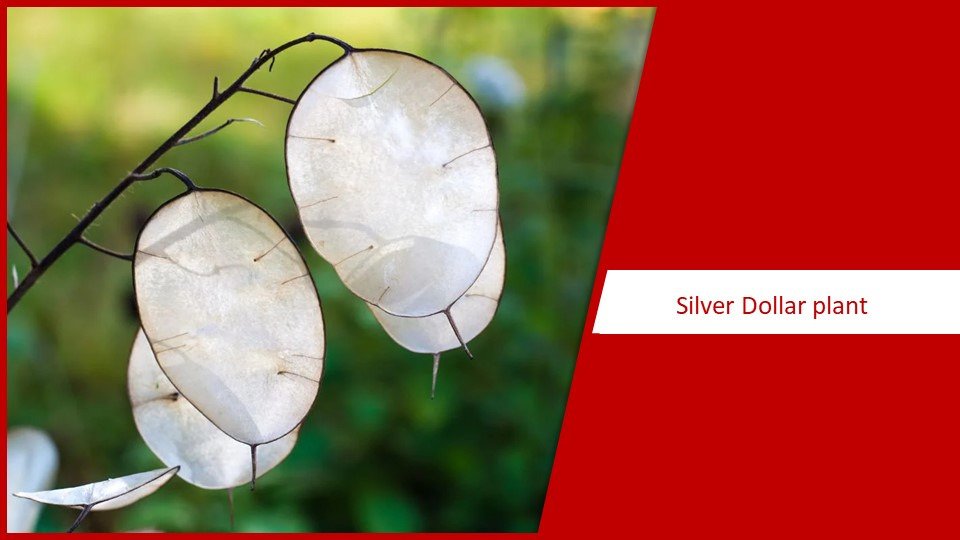
7. Crown of Thorns
| Scientific name | Euphorbia mili |
| Soil type | Well-drained sandy soil |
| Light requirement | Full to partial sun |
| Water requirement | Low |
The Crown of Thorns was named so because of the thorns and the red bracts of the flowers that resemble the Crown worn by Jesus Christ during his crucifixion and his blood. Crown of Thorns is a year-round flowering plant that is very easy to care for. Some plants are found to have leaves with a reddish tint.

8. Flapjack Plant
| Scientific name | Kalanchoe luciae |
| Soil type | Well-drained sandy loamy soil |
| Light requirement | Full to partial sun |
| Water requirement | Low to moderate |
The plant has flat, round leaves that form rosette clusters. It is the reason for the plant’s name being Flapjack or Paddle plant. The paddle-shaped leaves have a reddish-yellow coloring which looks golden when sunlight falls on them. So it is best to keep them in places where sunlight is present. Flapjacks are drought-tolerant succulents and are easy to care for.
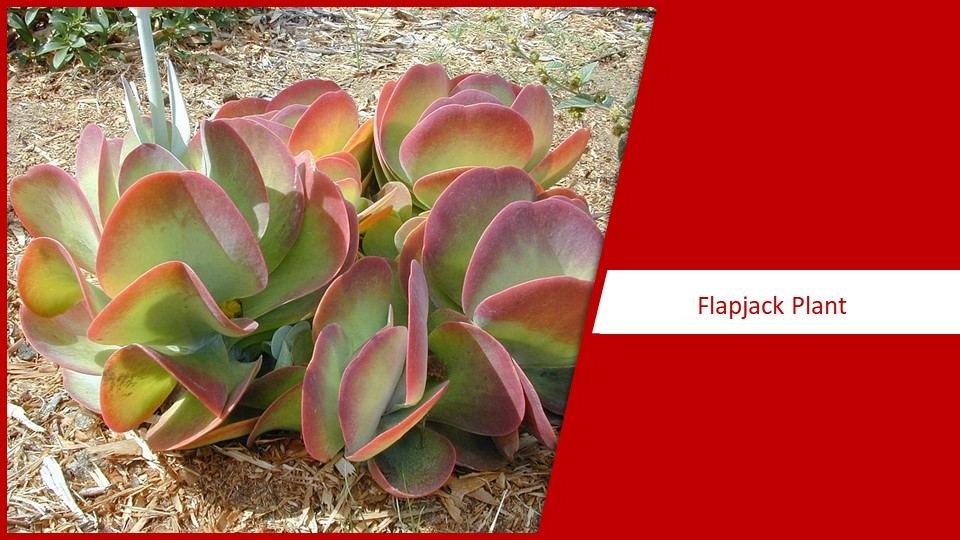
9. Christmas Cactus
| Scientific name | Schlumbergera x buckleyi |
| Soil type | Well-drained loamy soil |
| Light requirement | Partial shade loving |
| Water requirement | Low to moderate |
Christmas cactus is also called ‘holiday cactus’ as they bloom during the holiday season which is the winter season. The segmented stems of this succulent are leaf modifications. The leaves are flattened and slightly serrated on each side and produce a terminal flower. The flowers are pink to white colored and bloom only during the winter season. Christmas cacti are epiphytic plants because they grow on moss-covered trees.
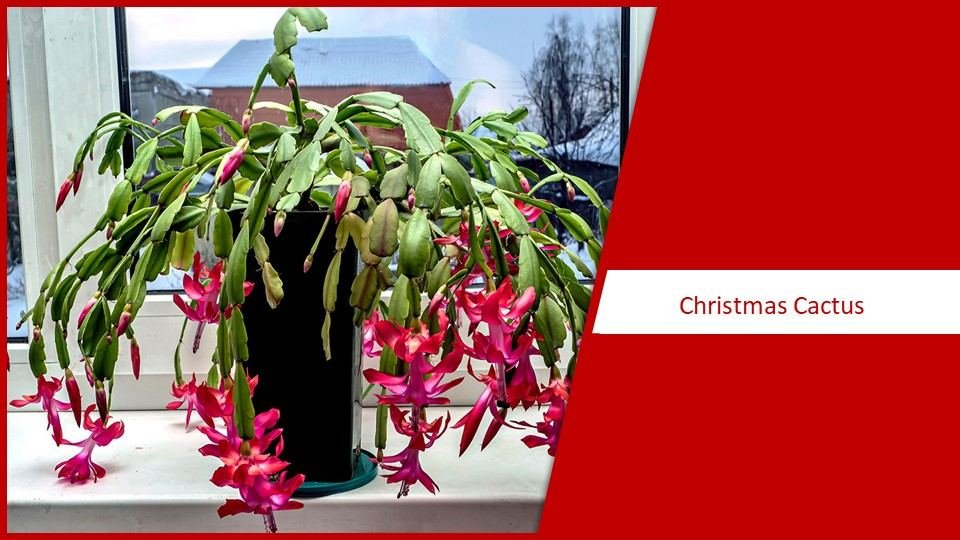
10. Flaming Katy
| Scientific name | Kalanchoe blossfeldiana |
| Soil type | Well-drained sandy, or loamy soil |
| Light requirement | Bright sunlight |
| Water requirement | Low |
Another plant in the list from the genus Kalanchoe after the flapjack plant. The Flaming Katy is also known by the names Christmas Kalanchoe, Florist Kalanchoe, and Madagascar widow’s thrill and is native to the Madagascar islands. The flowers of the plant have great variations in color like dark red, pink, oranges, and white. The flowers bloom in late autumn to early winter.
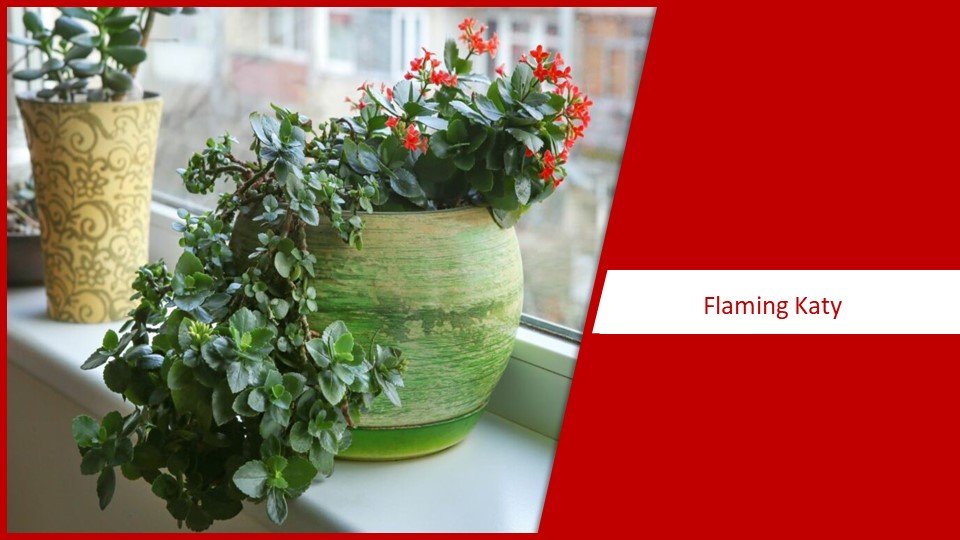
11. Chocolate Soldier Plant
| Scientific name | Kalanchoe tomentosa |
| Soil type | Well-drained sandy, or loamy soil |
| Light requirement | Full to partial sun |
| Water requirement | Low to moderate |
The chocolate soldier plant is infamous for its red-rimmed fleshy leaves. These Madagascar natives are also known as pussy ears or panda plants. They are very cute and are best for growing in groups. Chocolate soldier plants are extremely easy to maintain and will thrive year-round if planted indoors.
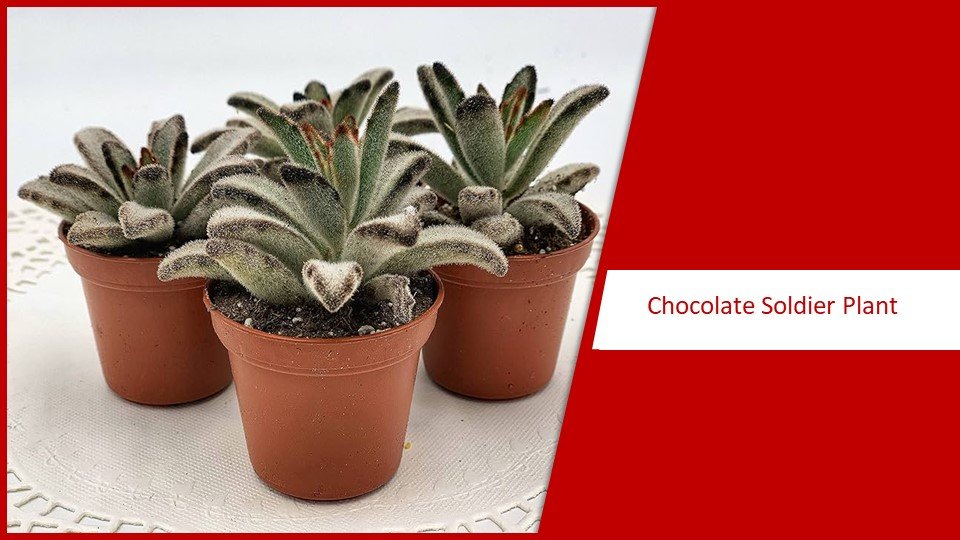
12. Zebra Haworthia
| Scientific name | Haworthiopsis attenuata |
| Soil type | Well-drained sandy, or loamy soil |
| Water requirement | Low |
One of the most commonly cultivated Haworthia species worldwide, the Zebra Haworthia is known for its horizontal white stripes on its leaves that give them their name. The short leaves form a rosette having a 6-12 cm diameter. The white markings are bands of white tubercles.

Also Read
13. Ponytail Palm
| Scientific name | Beaucarnea recurvata |
| Light requirement | Bright indirect sunlight |
| Water requirement | Low |
The Ponytail Palm or the Elephant’s foot is an elegant flowering succulent belonging to the Asparagaceae family. They are smaller than regular palms and can reach up to 5 m in length. They have a thick bulging base (caudex) that makes the whole palm look like an elephant’s foot.
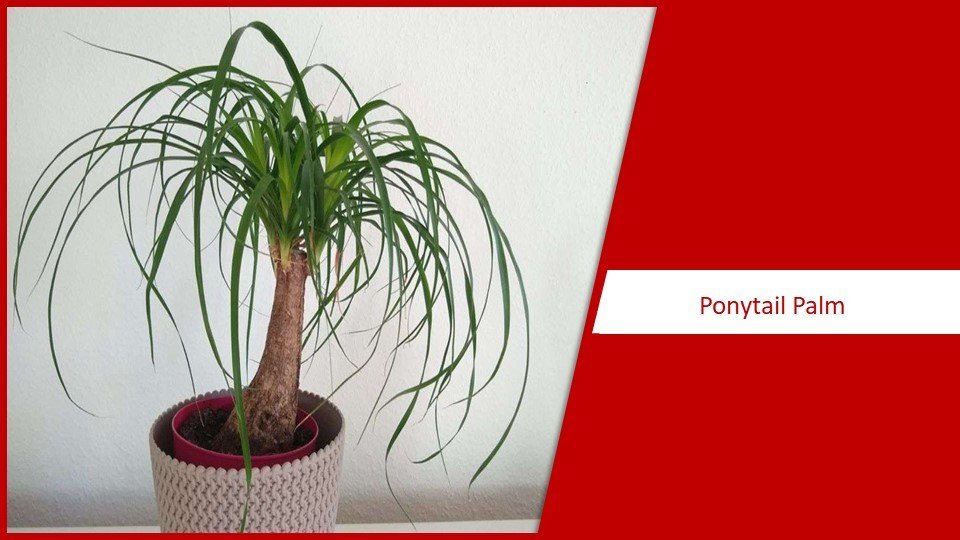
14. Ghost Plant
| Scientific name | Graptopetalum paraguayense |
| Soil type | Well-drained sandy soil |
| Light requirement | Bright indirect sunlight |
| Water requirement | Low |
The whitish-grey pointed leaves of the plant give it a creepy look, thus giving the name the Ghost plant. The greyish-white color is the residue of the plant that gives it a ghost-like appearance.
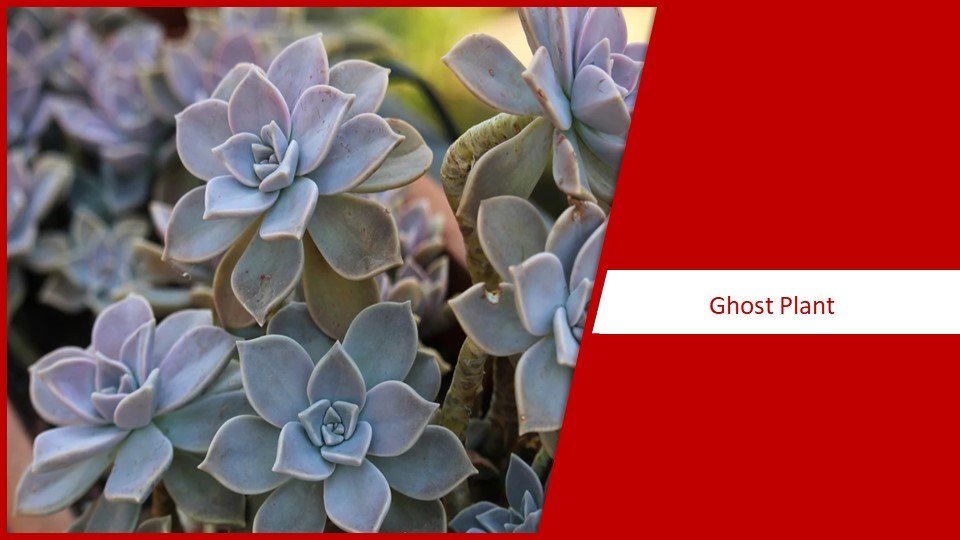
15. Mother of Thousands
| Scientific name | Kalanchoe diagremontiana |
| Soil type | Well-drained |
| Light requirement | Bright full sunlight |
| Water requirement | Regular irrigation required |
The Mother of Thousands is a succulent plant that has the unique ability to give rise to new plants from the plantlets that develop on the leaf margin. Due to this feature, the plant produces numerous offspring thus giving it its name. The plant parts contain a very toxic steroid known as diagremontianin.
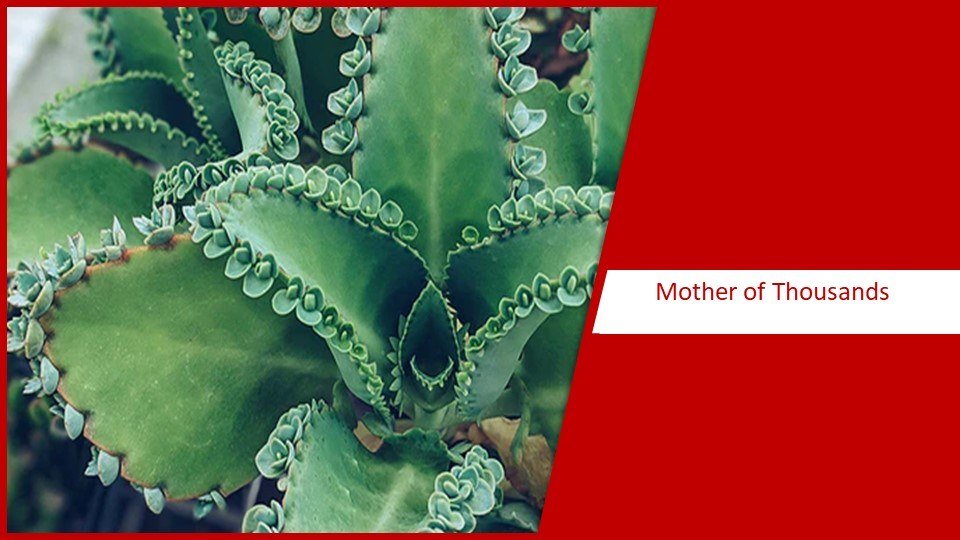
16. Jelly Bean Succulents
| Scientific name | Sedum rubrotinctum |
| Soil type | Well-drained sandy soil |
| Light requirement | Full sunlight |
| Water requirement | Low |
The name Jelly Bean plant refers to its short and fleshy leaves that resemble jelly beans. The leaves are green in color but a color change is observed from green to red. This is a protective adaptation in the plants in the summer months. It can grow in all types of soil except those that are poorly drained.
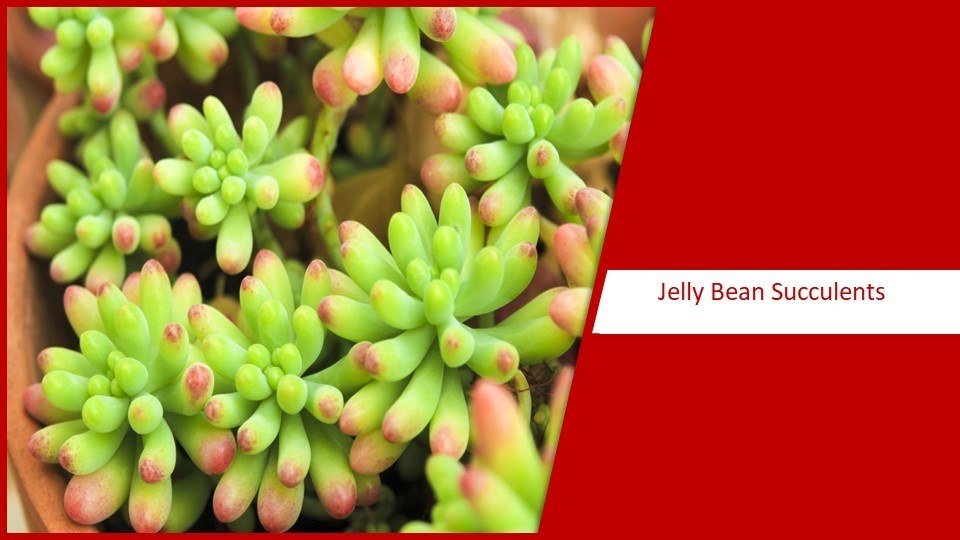
17. Pink Quill
| Scientific name | Tillandsia cyanea |
| Soil type | Well-drained soil |
| Light requirement | Partial sunlight |
| Water requirement | Low |
Although the Pink Quill only grows to a height of 10 inches, the pink bracts are relatively large and resemble ink quills thus the name. Apart from producing such beautiful structures, they produce beautiful small violet flowers attached to the bracts in spring and autumn.
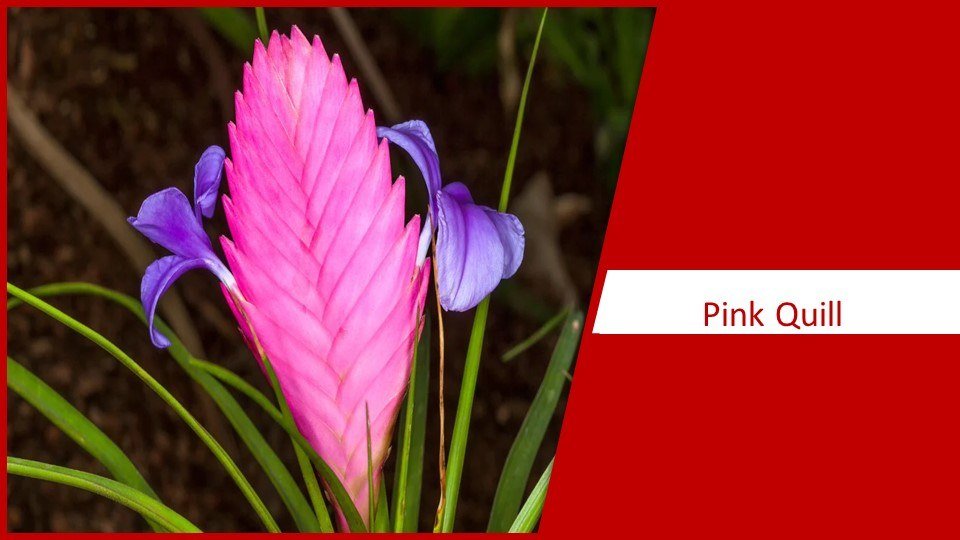
18. African Milk Tree
| Scientific name | Euphorbia trigona |
| Soil type | Well-drained loamy |
| Light requirement | Partial sunlight |
| Water requirement | Low |
This Central African native is also known as the Cathedral cactus. Having a resemblance to household sedges, the African Milk tree is a succulent shrub that has an upright stem and many lateral branches that grow upward. They have 5 mm long thorns that occur in pairs on the stem’s ridges. The leaves emerge from the space between two successive thorns.
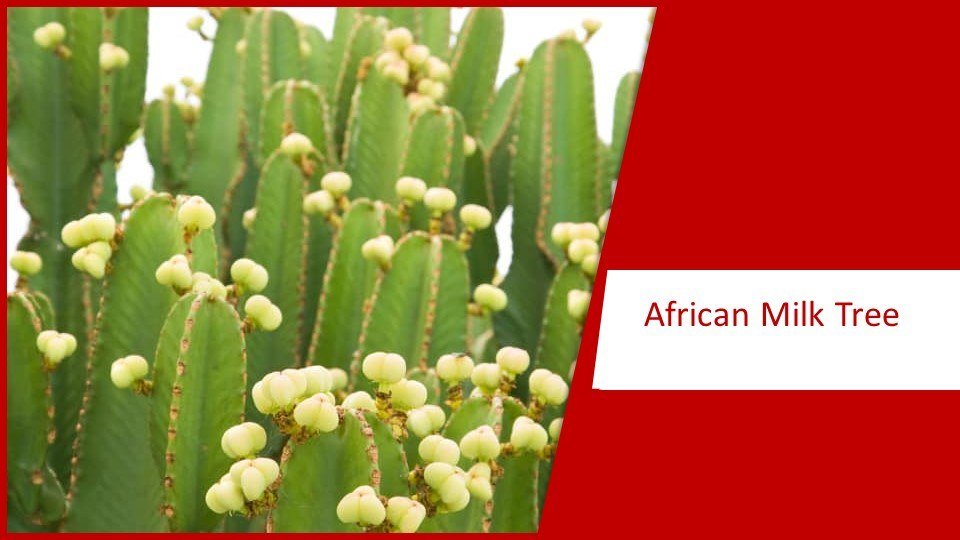
19. Hen and Chicks
| Scientific name | Sempervivum tectorum |
| Soil type | Well-drained sandy soil |
| Light requirement | Full sunlight |
| Water requirement | Low |
The name Hen and Chicks may sound a bit funny but the name is given because of the unique propagation system of the plant. The propagation is by offsets and because of this many offspring are formed around the mother plant resembling a flock of ‘Hens’ and ‘chicks’.
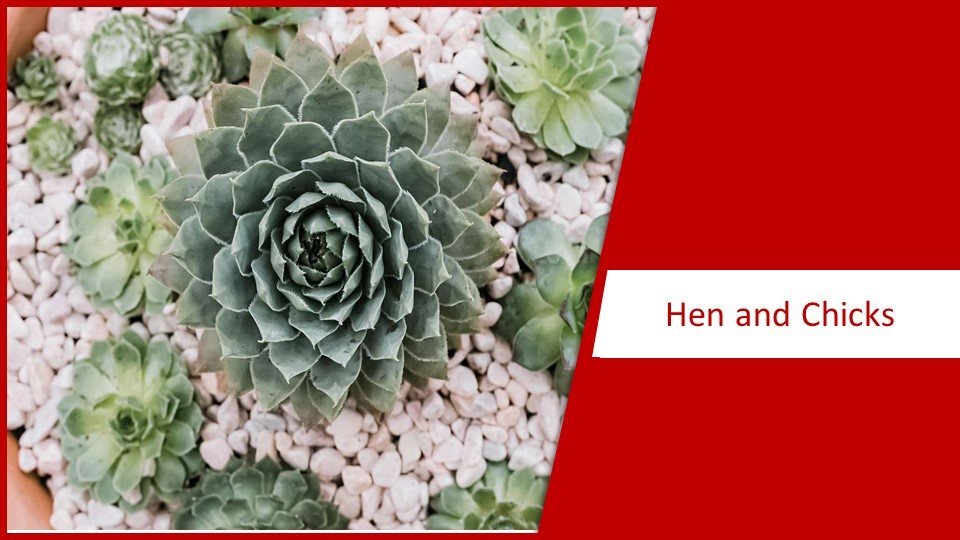
20. Tree Aeonium
| Scientific name | Aeonium arboretum |
| Soil type | Well-drained sandy loam soil |
| Light requirement | Full to Partial sunlight |
| Water requirement | Moderate |
The Tree Aeonium is an invasive weed species in certain areas like in temperate Australia. They have upright and smooth stems that reach 2 m in height. At the end of the stem, the leaves form rosettes. The leaves are obovate-shaped with wedge-shaped edges. The inflorescence is conical and stretches 10 to 25 cm in length.
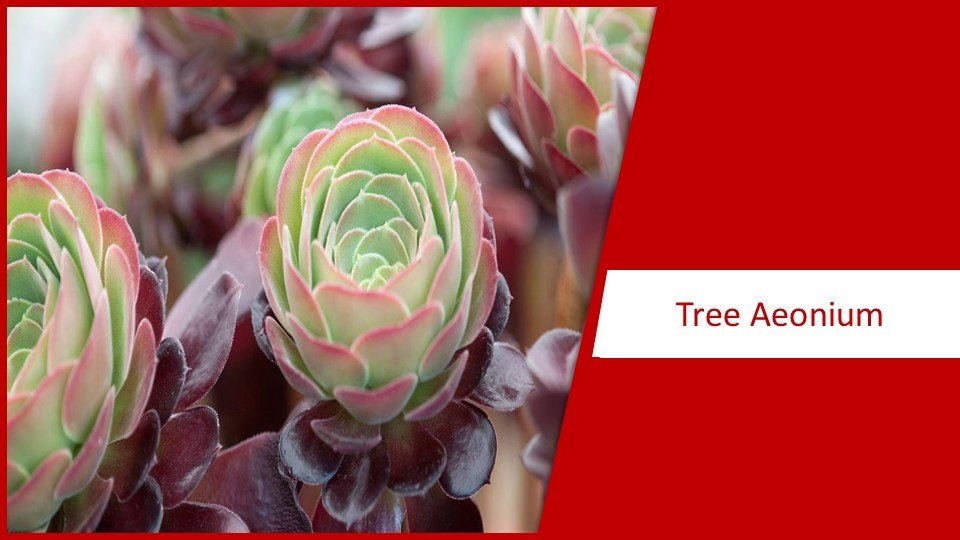
21. Parry’s Agave
| Scientific name | Agave parryi |
| Soil type | Well-drained sandy, loamy soil |
| Light requirement | Full sunlight |
| Water requirement | Moderate |
Parry’s Agave is a slow-growing, succulent, perennial that grows in arid regions of North America. The leaves have dark brown or black spines that are present at the tip. Bright yellow flowers bloom on a 12-foot-long stalk emerging from the plant.
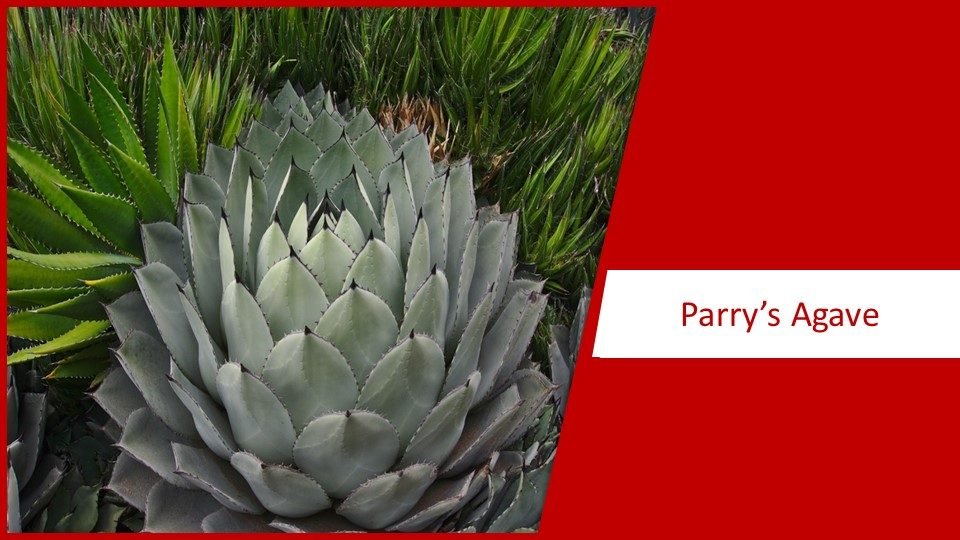
22. Giant Chalk Dudleya
| Scientific name | Dudleya brittonii |
| Soil type | Well-drained sandy soil |
| Light requirement | Full sunlight |
| Water requirement | Low |
The Giant Chalk Dudleya has yellow leaves that form a rosette on the top of a red peduncle. There are numerous leaves at the base of the rosette and they are erect. The leaves have convex curvature below the middle but are flat above it. The leaves, when they age form red color.
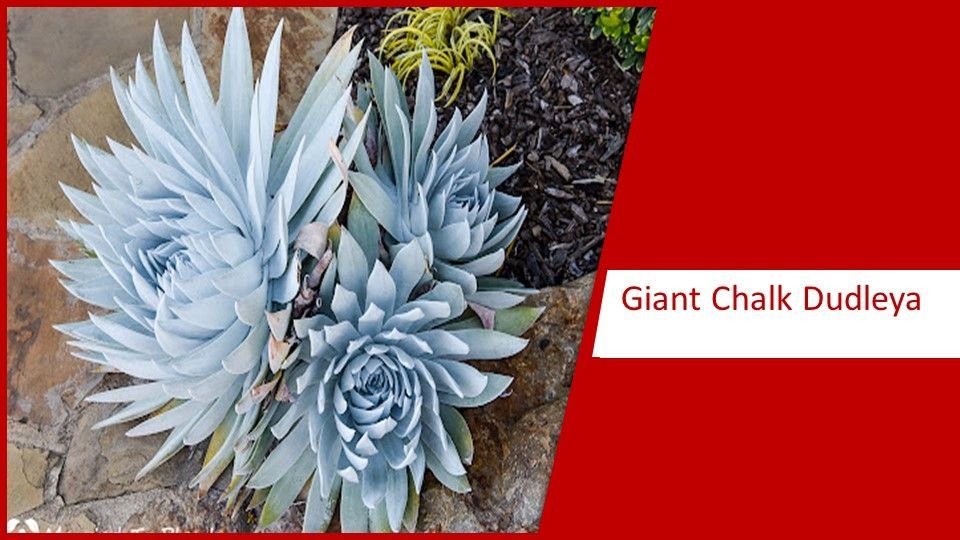
23. Propeller Plant
| Scientific name | Senecio crassissimus |
| Light requirement | Full to partial sunlight |
| Water requirement | Low |
Also known as the airplane, the propeller plant is a succulent plant that is native to South Africa. The grey-green leaves of the Propeller plant fold to form a central cavity resembling a boat. The flowers bloom during the summer.
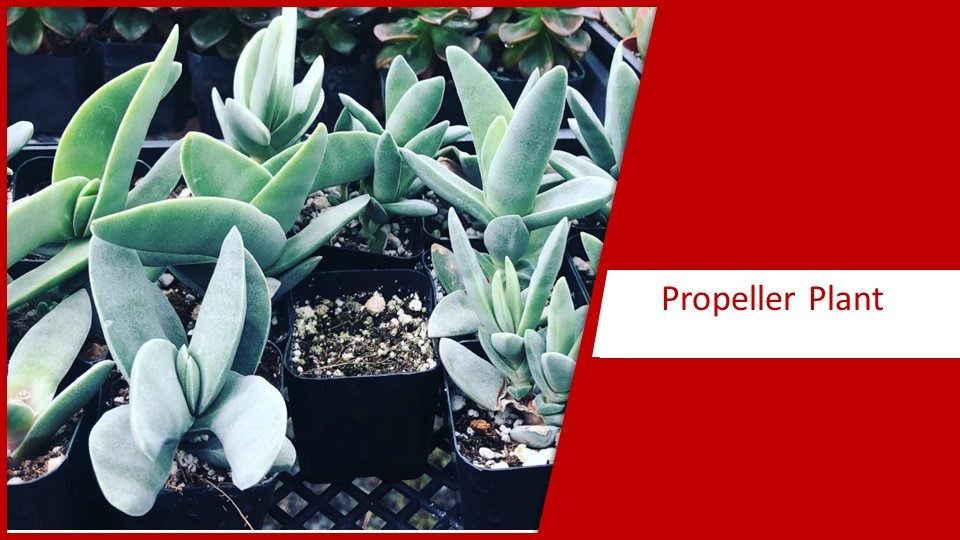
24. Eastern Prickly Pear
| Scientific name | Opuntia humifusa |
| Soil type | Well-drained sandy soil |
| Light requirement | Full sunlight |
| Water requirement | Low |
Commonly known as the Devil’s Tongue or the Indian fig, the eastern prickly pear is the most popular prickly pear. Golden yellow colored flowers bloom from the margins of some segments which are amazing to watch.
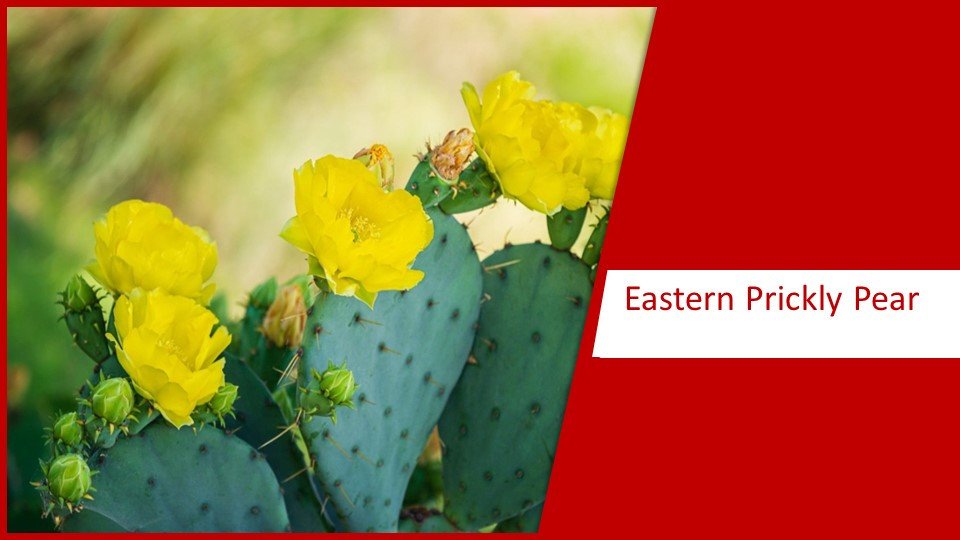
25. Autumn Joy Stonecrop
| Scientific name | Hylotelephium telephium |
| Light requirement | Full sunlight |
| Water requirement | Low |
The most peculiar feature of this succulent is the flowers that are held in dense heads and can be reddish or yellowish-white. Several different varieties differ in the color from purple to pink. The tubers can be cooked and consumed whereas the leaves can be eaten raw.
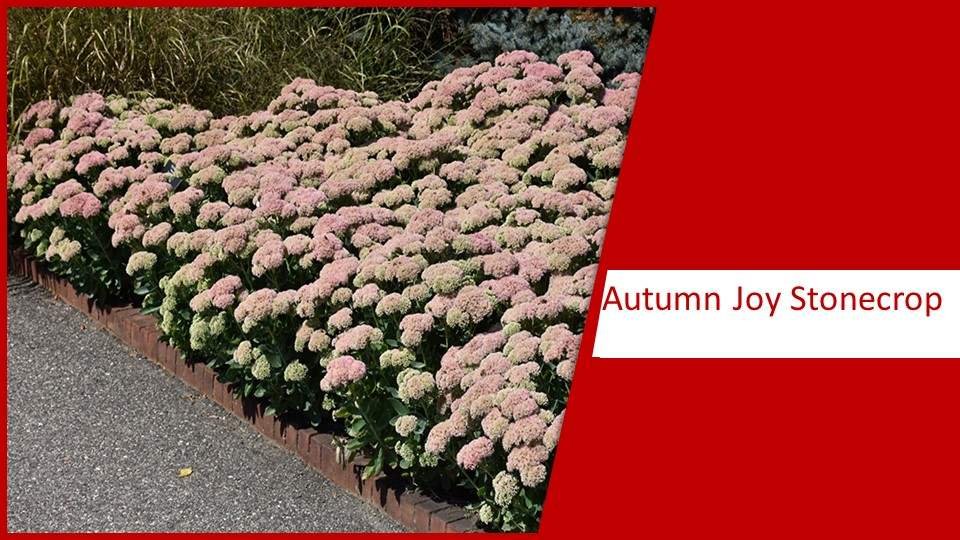
26. Hardy Ice Plant
| Scientific name | Delosperma cooperi |
| Light requirement | Full sunlight |
| Water requirement | Low |
The Hardy Ice plant is a dwarf, trailing, perennial, succulent plant that is a good addition to your garden both indoors and outdoors due to its ability to form a dense lawn with abundant flowers. They have linear and simple fleshy leaves and a herbaceous trailing stem that can grow 10-15 cm long. They produce a large number of pink or magenta flowers that cover the entire plant length.
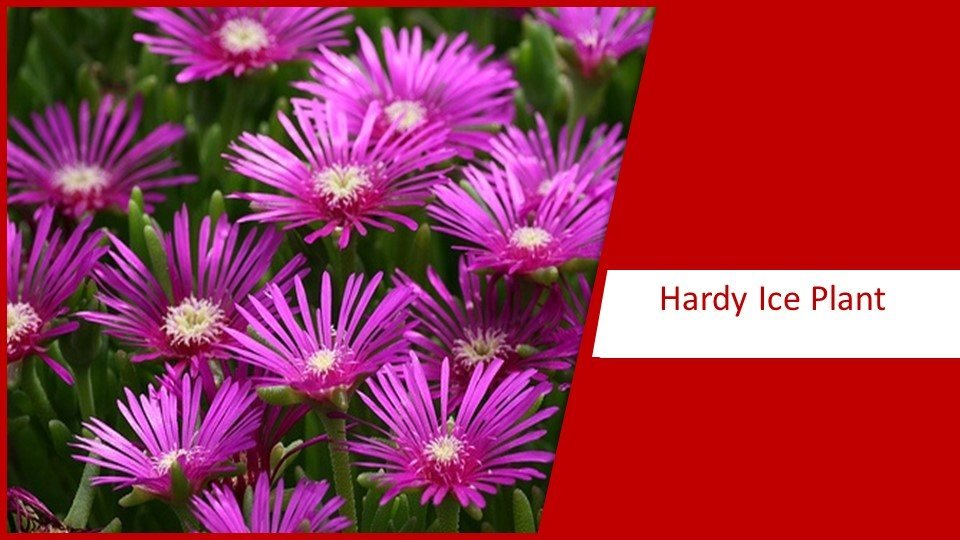
27. Living Stones
| Scientific name | Lithops spp. |
| Light requirement | Full sunlight |
| Water requirement | Low |
The meristem is present in the gulf between the leaves. The leaves are fenestrated with various shades of grey, brown, black, and red lines that ensure a rock-like appearance. The flower emerges from in between these fused leaves.
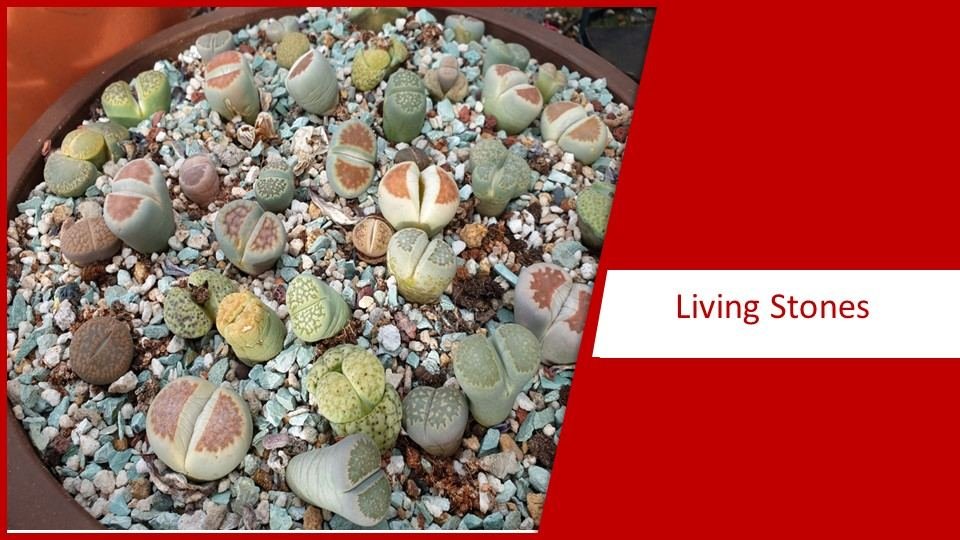
28. Aloe Vera
| Scientific name | Aloe barbadensis miller |
| Soil type | Sandy coastal and loamy |
| Light requirement | Bright light required |
| Water requirement | Regular watering |
Aloe vera is an evergreen perennial succulent herb that originated in the Arabian peninsula but grows well in tropical, semi-tropical, and arid climates. The Aloe leaves contain a polysaccharide gel called acemannan, that can be used to treat skin conditions like wounds, burns, rashes, frostbite, psoriasis, or dry skin.

29. Snake Plant
| Scientific name | Dracaena trifasciata |
| Soil type | Well-drained soil |
| Light requirement | Indirect light |
| Water requirement | Low |
Also known as St. George’s sword or mother-in-law’s tongue, the Snake plant is a common house plant favored for its low maintenance and health benefits. They can be easily recognized by their upright sword-like foliage that resembles snakes, hence the name. The plant can tolerate low watering and in winter it requires only a single watering every 2 months. Apart from making your indoors attractive, the snake plant filters the indoor air, ridding the air of 4 major toxins that can cause diseases.
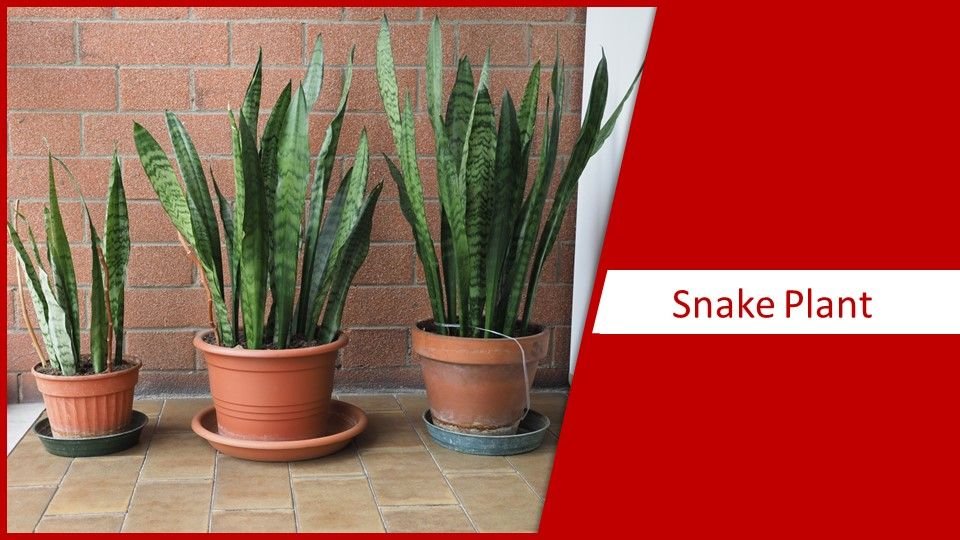
30. Money Plant
| Scientific name | Crassula ovata |
| Soil type | Loose, rocky, and well-drained soil |
| Light requirement | Indirect light |
| Water requirement | Moderate |
Money plant is a popular indoor plant considered a good luck plant and is an essential indoor plant. According to Feng Shui, money plants attract wealth, and gifting them is a sign of good luck. So, next time you plan on gifting something to your friends or relatives, the money pant is a very good option.
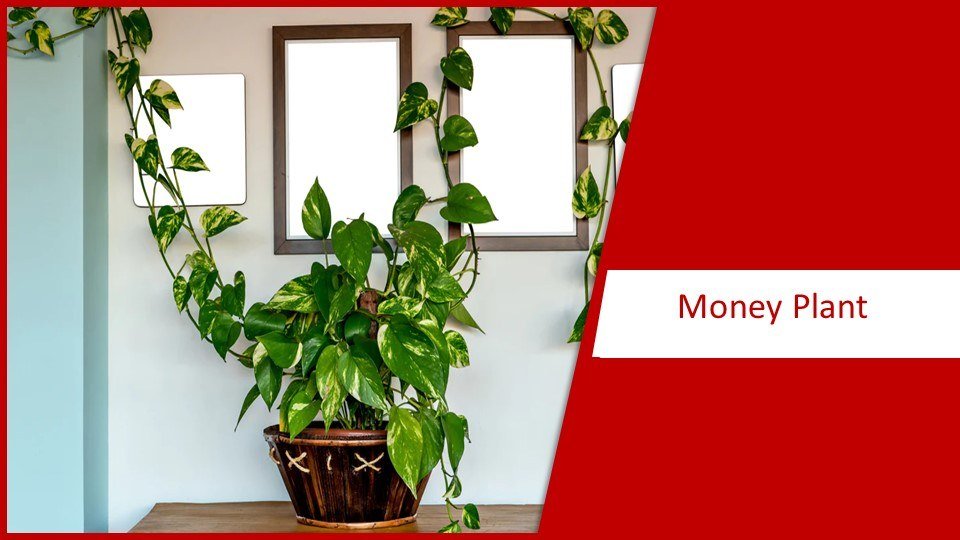
Conclusion
So far we have looked at 30 different types of succulent plants and their features that can be a great addition to your garden. Glancing through this list, you can grasp the amount of uniqueness and diversity each of these plants have. Succulents are a group that has the most beautiful and special plants in the plant Kingdom. So try to get as many succulents as you can for your garden.
Latest Post
- Top Coffee Producing States in India
- 15 Best Indoor Farming Business Ideas in India
- Saffron Farming at Home: Amazing Guide for You in Steps
- Aloe vera farming in India – Cost, Market Trends and Profits
- March 2025 : Times of Agriculture Magazine
- Olive Farming in India: High Demand Oil Crop in 2025
- February Issue 2025 : Times of Agriculture
- 25 Types of Agave Plants to Create a Whimsical Landscape.
- Indoor Plants with Flower : Top 15 Flowering Indoor Plants

